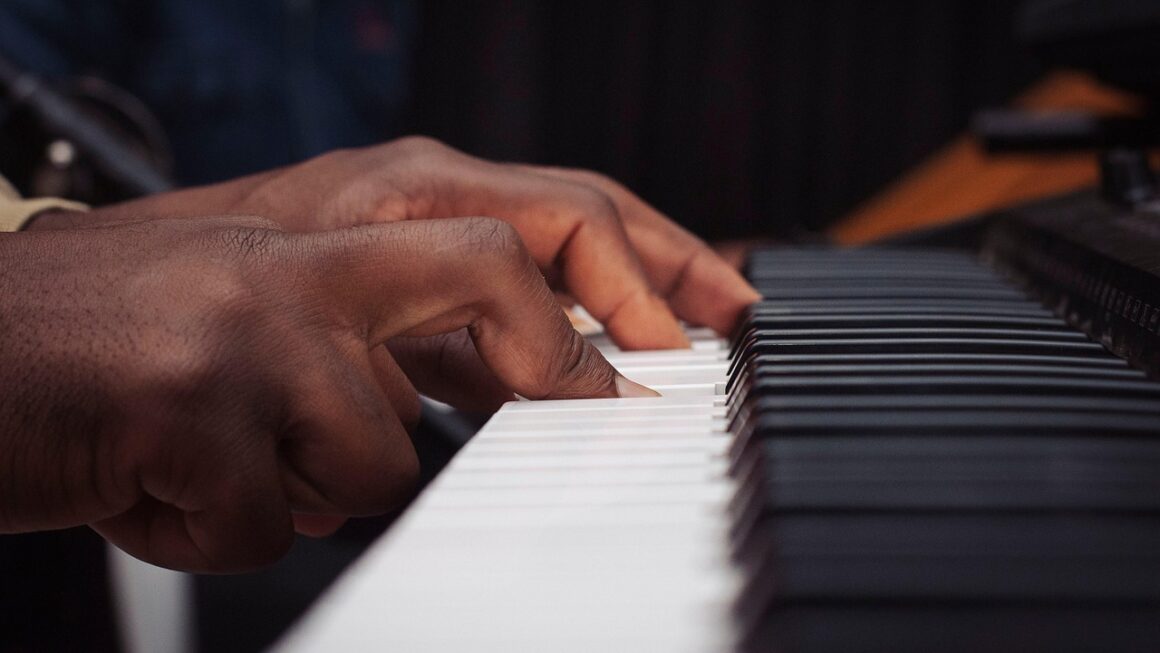New music releases are the lifeblood of the music industry, driving fan engagement, artist recognition, and revenue streams. Whether you’re an emerging artist or an established act, understanding the intricacies of planning, executing, and promoting a successful music release is crucial. This guide will walk you through every step, ensuring your music reaches its intended audience and makes a lasting impact.
Planning Your Music Release
Defining Your Goals and Objectives
Before diving into the practical aspects of releasing music, it’s essential to define your goals. What do you hope to achieve with this release?
- Increase Brand Awareness: Aiming to grow your fanbase and reach a wider audience.
- Boost Streams and Sales: Focusing on generating revenue through digital platforms.
- Secure Media Coverage: Targeting press, blogs, and radio stations for exposure.
- Drive Ticket Sales: Promoting upcoming shows or tours alongside your release.
Clearly defining your goals will help you tailor your strategy and measure your success. For example, if your goal is increased brand awareness, track your social media follower growth, website traffic, and mentions in online publications.
Choosing the Right Release Strategy
There are several different release strategies you can choose, each with its own advantages and disadvantages.
- Single Release: Releasing one song at a time, often with a music video, to build anticipation for a larger project. Singles allow you to focus your marketing efforts on one specific track and gauge audience reaction.
- EP Release: A collection of 4-6 songs, offering a more substantial body of work than a single but less demanding than a full album. EPs are great for showcasing different aspects of your artistry.
- Album Release: A full-length project typically consisting of 8 or more songs. Albums provide a comprehensive artistic statement and are ideal for established artists or those looking to make a significant impact.
- Surprise Release: Releasing music without any prior announcement. This can generate buzz and excitement, but requires a strong existing fanbase and a well-executed rollout. Beyoncé’s self-titled album in 2013 is a prime example of a successful surprise release.
Consider your budget, resources, and target audience when choosing the right release strategy. A smaller budget might necessitate a single or EP release, while a larger budget could support a full album campaign.
Creating a Timeline and Budget
A well-defined timeline is essential for a smooth and successful music release. Start by outlining all the key milestones, such as:
- Song Selection and Mastering: Finalizing the tracklist and ensuring high-quality audio.
- Artwork and Visuals: Creating cover art, promotional photos, and music videos.
- Marketing and Promotion: Planning social media campaigns, press outreach, and advertising.
- Distribution and Release Date: Setting a release date and working with a distributor to get your music on streaming platforms.
Allocate a budget for each aspect of your release, including recording, mixing, mastering, artwork, marketing, and distribution. Be realistic about your financial resources and prioritize the most important elements. Free tools like Google Sheets or Excel can help you create and manage your budget and timeline effectively.
Preparing Your Music for Release
Music Production and Mastering
High-quality audio is paramount. Invest in professional mixing and mastering to ensure your music sounds its best on all platforms.
- Mixing: Blending all the individual tracks together to create a cohesive and balanced sound.
- Mastering: The final stage of audio production, optimizing the overall sound for various playback systems.
Even if you’re on a tight budget, consider hiring a professional mastering engineer. A well-mastered track can make a significant difference in the overall listening experience. Services like LANDR offer affordable online mastering options.
Creating Engaging Artwork and Visuals
Your artwork is the first visual representation of your music. It should be eye-catching, memorable, and reflective of your artistic style.
- Cover Art: Design a compelling cover that captures the essence of your music.
- Promotional Photos: Capture high-quality photos that you can use for press releases, social media, and promotional materials.
- Music Videos: Consider creating a music video to enhance the visual appeal of your release and reach a wider audience.
Use tools like Canva or Adobe Spark to create professional-looking artwork and visuals, even if you don’t have extensive design skills.
Registering Your Music
Protect your intellectual property by registering your music with relevant organizations.
- Copyright Registration: Register your songs with the U.S. Copyright Office to protect your ownership rights.
- Performance Rights Organizations (PROs): Join a PRO like ASCAP, BMI, or SESAC to collect royalties for public performances of your music.
- Mechanical Licensing Collective (MLC): Register with the MLC to collect mechanical royalties from digital streaming services.
Registering your music ensures you receive proper compensation for your work and protects your rights as a songwriter and composer.
Distribution and Platform Strategy
Choosing a Music Distributor
A music distributor gets your music onto streaming platforms like Spotify, Apple Music, Amazon Music, and more. Popular options include:
- DistroKid: Known for its affordable pricing and unlimited uploads.
- TuneCore: Another popular distributor with a range of pricing plans.
- CD Baby: Offers both digital distribution and physical distribution options.
Consider factors like pricing, royalty splits, customer support, and additional features when choosing a distributor. Some distributors offer services like sync licensing and publishing administration.
Optimizing Your Music for Streaming Platforms
Once your music is distributed, optimize your presence on each platform to maximize visibility.
- Claim Your Artist Profile: Verify your artist profile on Spotify, Apple Music, and other platforms to gain access to analytics and customization options.
- Create Engaging Playlists: Curate your own playlists and submit your music to relevant playlists curated by others.
- Utilize Artist Tools: Take advantage of the artist tools offered by each platform, such as Spotify for Artists and Apple Music for Artists.
These tools provide valuable data and insights into your audience, allowing you to tailor your marketing efforts.
Setting the Release Date
Choosing the right release date can significantly impact the success of your music.
- Avoid Major Holidays and Events: Steer clear of dates when major releases or holidays might overshadow your music.
- Consider Release Day Trends: Friday is generally considered the best day to release new music, as it aligns with the global release day standard.
- Promote in Advance: Announce your release date well in advance to build anticipation and generate buzz.
Use platforms like Chartmetric to analyze release date trends and identify optimal release windows.
Marketing and Promotion
Building Your Online Presence
A strong online presence is crucial for reaching your target audience and promoting your music.
- Website: Create a professional website that showcases your music, videos, tour dates, and merchandise.
- Social Media: Engage with your fans on social media platforms like Instagram, Facebook, Twitter, and TikTok.
- Email List: Build an email list to stay in touch with your fans and promote your releases, shows, and merchandise.
Consistent and engaging content is key to building a loyal fanbase online. Share behind-the-scenes content, interact with your followers, and run contests and giveaways to increase engagement.
Public Relations and Media Outreach
Securing media coverage can significantly boost your visibility and credibility.
- Press Release: Write a compelling press release announcing your music release and highlighting its key features.
- Targeted Outreach: Identify relevant blogs, magazines, radio stations, and podcasts that cover your genre and reach out to them with your music.
- Offer Exclusive Content: Provide journalists and bloggers with exclusive content, such as early access to your music or interviews, to incentivize coverage.
Services like SubmitHub can help you connect with bloggers and playlist curators.
Paid Advertising
Paid advertising can be an effective way to reach a wider audience and drive traffic to your music on streaming platforms.
- Social Media Ads: Run targeted ads on social media platforms like Facebook and Instagram to reach potential fans.
- Spotify Ads: Use Spotify Ad Studio to create audio and video ads that reach listeners while they’re streaming music.
- Google Ads: Run search and display ads on Google to reach people searching for music similar to yours.
Start with a small budget and experiment with different ad formats and targeting options to find what works best for you.
Conclusion
Releasing music is a multifaceted process that requires careful planning, execution, and promotion. By defining your goals, choosing the right release strategy, preparing high-quality music and visuals, optimizing your presence on streaming platforms, and implementing a comprehensive marketing plan, you can increase your chances of success and reach a wider audience. Remember to stay consistent, engage with your fans, and adapt your strategy as needed to stay ahead in the ever-evolving music industry.



